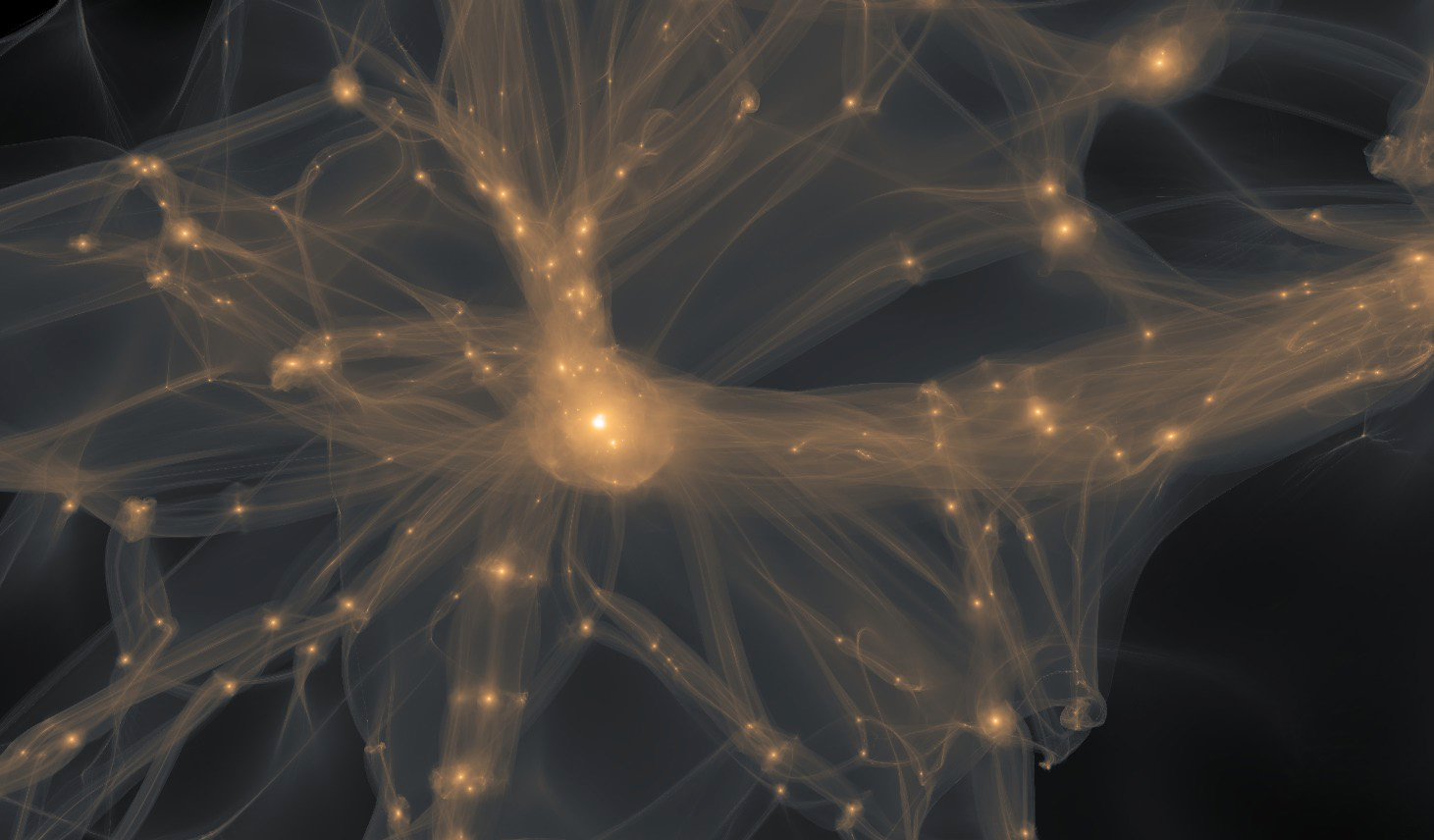The density distribution rendered from a dark matter simulation using the tetrahedral tessellation approach. The tetrahedral decomposition of the computational domain allows a more accurate estimation of the mass density between the tracer particles than previous methods. They use the full phase-space information of the ensemble of dark matter tracer particles. Without artificial smoothing or density estimates derived from averaging over the particle distribution, features previously washed out, become clearly visible and give new insight in the physical large-scale features of the cosmic web, including voids, filaments and halos. Large-scale structures like sheets (gray), filaments (yellow) and halos (white), as well as caustics on smaller scales (close-up), become clearly visible.
Methods: tetrahedral tessellation projection





